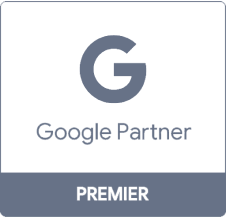What Is Email Marketing? Definition, Types, and Tips!
Here’s quick overview of everything we’ll cover in this email guide:
- What is email marketing?
- Benefits of email marketing
- 5 common types of email marketing
- How to build your email list
- 7 email marketing best practices and tips
- Email marketing FAQs
So, just keep reading to learn the email marketing definition and how it can drive revenue for your business!
Time to Level Up Your Sales
Our long list of services helps you grow every aspect of your business with marketing strategies that are proven to increase bottom-line metrics like revenue and conversions.
In the past 5 years, we’ve managed more than 14.9 MILLION transactions across our client base.
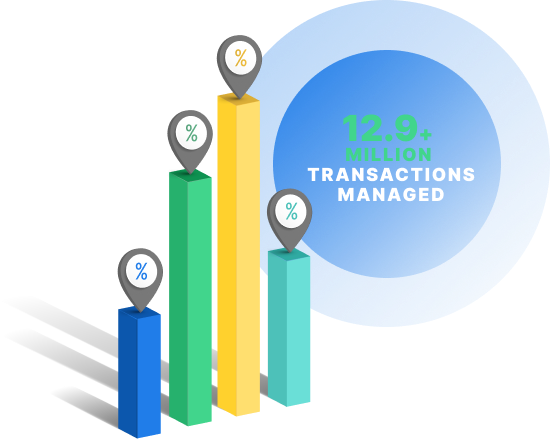
What is email marketing?
Email marketing definition
Email marketing is a digital marketing strategy that uses email to send marketing messages directly to current and potential customers’ inboxes.
Via email marketing, your company can promote:
- New products or services
- Sales promotions
- Achievements
Want to keep your audience engaged with your brand? You can do so by sharing helpful, non-sales content with them through email. You can use email marketing in your lead generation and brand awareness efforts.
Benefits of email marketing
Now that you know the definition of email marketing, let’s look at the amazing advantages of email marketing for your business:
3 benefits of email marketing
Let’s discuss each one:
1. Upsell opportunities
Once you’ve obtained the email address of your current customers, with their permission of course, your email marketing campaign can unlock a world of upsell opportunities so you can earn more sales.
For example, you can recommend more of your products that your customers would enjoy based on their past purchases. You can also tell your current clients about your new services to encourage them to sign up.
2. More conversions
Email marketing helps you expertly nurture your leads and nurture them into conversion.
For example, you can send email drip campaigns that enable your leads to learn more about your brand, encouraging them to make a purchase. That means you can enjoy more conversions in the long run for your business.
3. Increased customer loyalty
Staying in touch with your customers is the key to building brand loyalty that keeps them coming back for more. With email marketing, you can stay in touch with your customers long after they purchase, keeping your brand at the forefront of their mind.
Plus, you can use emails to send your customers special discounts or offers, encouraging them to purchase from you agin in the future.
5 common types of email marketing
There are various types of email marketing you can adopt, including:
Types of email marketing
1. Welcome emails
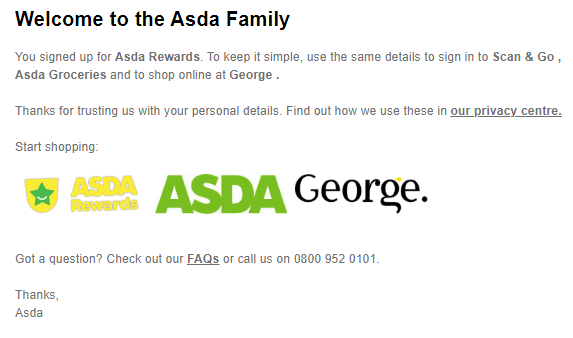
Welcome emails are just what the name says, they welcome your potential customer to your brand and encourage them to learn more about your products or services.
Whenever someone signs up for your email newsletter or reaches out to your company, you can send them a welcome email. You can also send welcome emails to customers who just purchased your products or subscribed to your services.
2. Promotional emails

Promotional emails enable you to showcase your products or services to your subscribers. They help you maintain awareness about your brand and encourage your audience to check out your newest offerings.
3. Newsletter emails
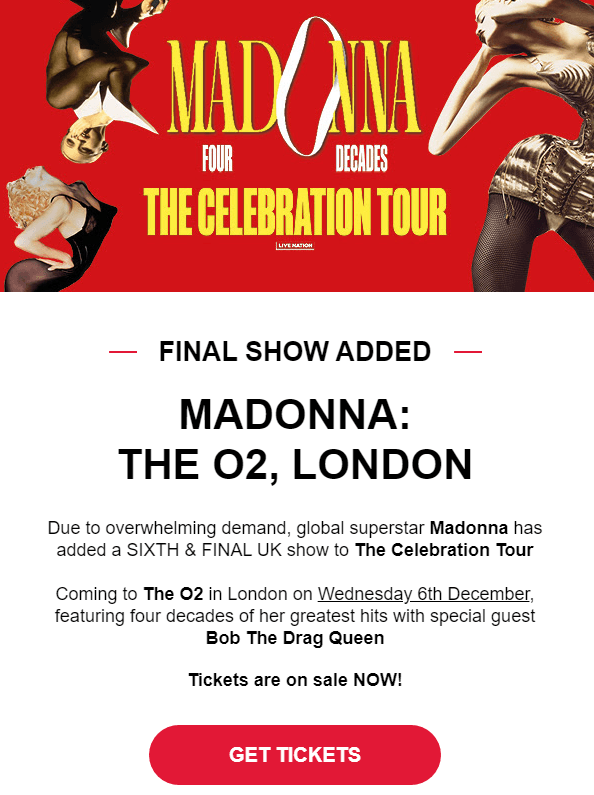
Newsletters are the perfect way to inform your audience about your brand. You can share recent updates about your brand, new products or services, helpful content from your website, and much more.
4. Lead nurturing emails
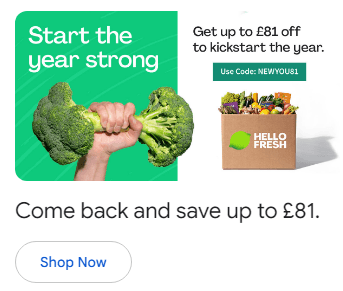
Lead nurturing emails usually come in the form of email drip campaigns. With an email drip campaign, you’ll target a specific group of your audience that is interested in a particular product or service and send them a series of emails over a period of time to nurture them towards conversion.
5. Survey emails
Survey emails are a great way to gather feedback and insights from your audience. You can ask them their:
- Experience with your products or services
- Interests
- Demographics
- And more
You can then use the information from your surveys to improve your products or services, and optimize your other marketing strategies.
How to build your email list
When it comes to earning subscribers for your email marketing strategy, you want to focus on:
Keep reading to learn more about each of these factors.
Honesty: What does someone get in return for giving their email address?
First, you should be honest about what you’re giving someone for their email address. Most of the time this is free information, like how-to guides.
How-to guides and other free helpful information help businesses in two big ways. The first way is that it shows your knowledge and authority concerning the industry.
Banks can write about investment, retirement, different account types, and other finance-related concepts.
Manufacturers can publish information about their range of materials, client processes, distribution partners, and other topics that may interest their target audience.
Rehab centers can discuss their admission procedures, how to avoid relapse, the importance of family, and a range of other support-related ideas.
The second way it helps you is by gathering your target audience’s email address to know them better and nurture your relationship with them.
You can gate your content that’s saved in a .zip file or PDF and post it to your site. To access the files, the users must give you their email addresses.
Once they’ve given you their email address, they can download the content for free — and you can add them to your list of email marketing subscribers.
Gated content is one of the most popular ways to get email addresses from your website visitors. People who are willing to give you their contact information for free content are likely part of your target audience, because they’ve actively shown interest in learning about your industry.
That makes these website visitors qualified to become leads for your business.
But no matter what industry you’re in or what you’re giving away, you must be honest about what subscribers will get when they provide you with their contact information.
If they expect a PDF download and get a disorganized .zip file instead, your visitor will feel like they’ve been deceived or ripped off.
By being 100% upfront with your visitors about what they’ll get in return for their email address, you ensure they’re satisfied and ready to hear more from you.
Transparency: What will you do with the email addresses you collect?
The short version of this point is that no one likes spam.
No one wants to give their email address to a company that sell it for a profit. With that in mind, it’s almost always helpful for companies to say what they won’t do with someone’s email address.
Saying “we never send spam,” “we’ll never spam you,” or “we’ll never sell your information” goes a long way in making someone feel comfortable submitting their personal information.
This happens for several reasons, but the two most important are also the simplest.
First, you’re telling someone they can trust you. Second, you’re showing you understand their reservations about submitting their information to you.
You’re telling your visitors directly that you’ll take care of their personal information so they won’t be inconvenienced. And when you’re asking for someone’s email address, that goes a long way.
You can even go a step further and tell people when they can expect messages from you. This may change depending on the email list you use, but it’s still helpful information.
It’s ultimately up to you whether you discuss information like that on your site. But from a transparency standpoint, it couldn’t hurt!
7 email marketing best practices and tips
Are you ready to get started with your first or revamped email marketing campaign?
Follow these top tips and best practices to launch a successful email marketing campaign or download our free email marketing checklist:
Email marketing best practices
Let’s discuss each one:
1. Get an email marketing platform
To get started with email marketing, you’ll need a platform that’ll let you send out hundreds (or thousands) of messages at the same time.
An email marketing platform minimizes the amount of time you spend creating each message, without sacrificing quality. You want great messages going out to your leads and potential customers, so you should have a service that lets you do that easily and quickly.
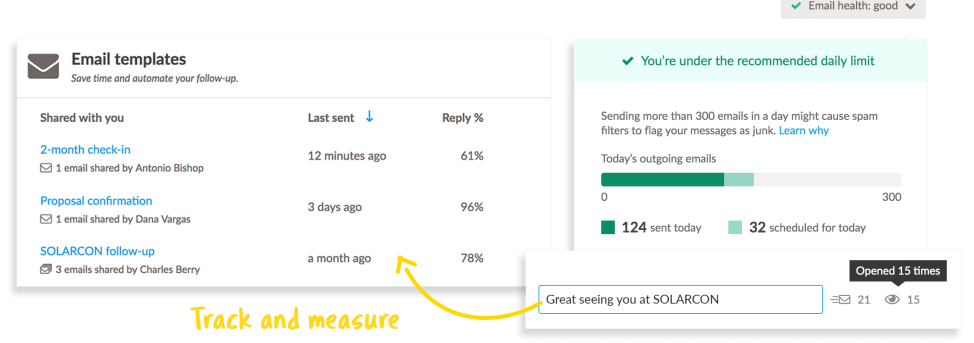
EmailMarketingFX, our email marketing platform, is designed from the ground up to be simple, versatile, and helpful. We offer it to all of our clients through our email marketing plans. With this platform, you can create and manage your email blasts and campaigns.
2. Segment your email subscribers
Now that you have a platform, it’s important that you segment your email subscribers accordingly.
The best way to segment them varies on a case-by-case basis. It may make sense to segment them according to the products they’re interested in. Other times, it’s best to sort them according to their demographics like location.
Depending on what you do and what you offer, your business can have a handful of segments or dozens. It’s important to have them as they keep your marketing organized and it lets you talk to people specifically about their needs.
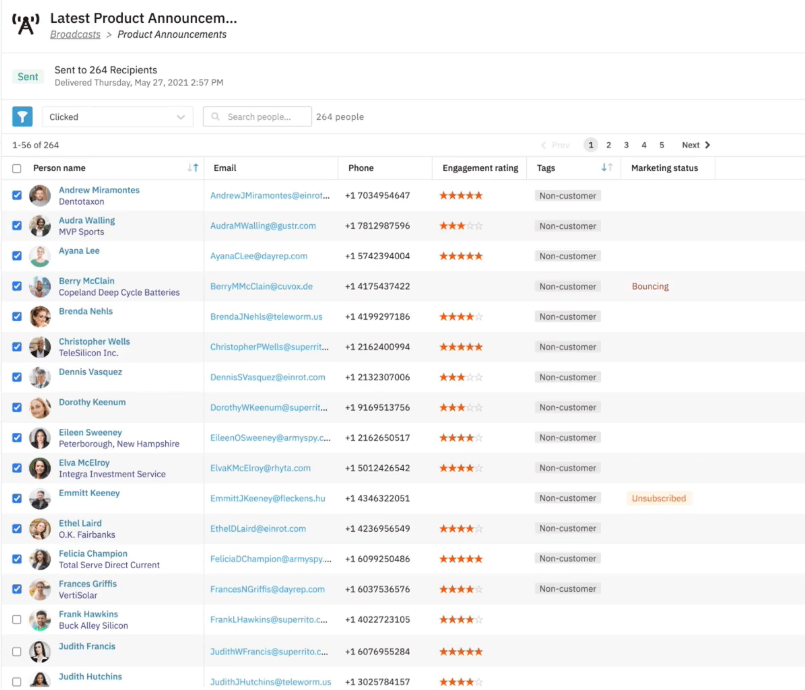
For example, let’s say you’re in the business of pet supplies. You can segment your email subscribers according to their pets (dog, cat, fish, or small animals) so you send only the relevant promotions and information to them.
A cat owner might unsubscribe from you if you keep sending them information and special offers on rabbit supplies.
3. Create content for your subscribers
The best content for email lists is always relevant to the page where someone signed up to hear from you.
So if you have an email segment that covers how to buy, break in, and use ballet shoes, stick to those topics for your emails.
Some types of campaigns — like newsletters — require you to create new emails on a regular basis. This can take up some time from your week, but it’s a small price to pay to keep potential customers in the know.
Other campaigns — often for sales-related topics — can be set up way ahead of time in a drip email format. This means you create between three to five messages that are all designed to bring someone back to your site and convert into a paying customer.
If someone doesn’t respond by the end of this cycle, they’re probably not going to convert. Some companies choose to remove someone’s email address from their list at that point, while others opt to place them in their newsletter list.
Regardless of what you choose, this isn’t an ideal scenario. But you can improve it over time in processes we’ll discuss later. But now that you have your email campaigns set up, it’s time to connect them to your website.
4. Connect campaigns to your content
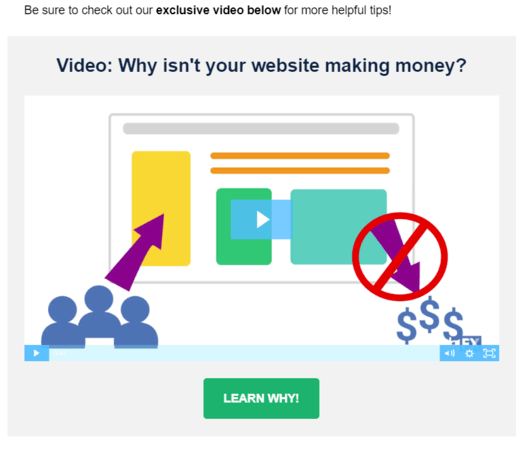
This is probably the fastest step of this whole process.
Once you have your campaigns made and populated with messages, you can connect these lists to their corresponding pages on your site. Then, you can watch the conversions roll in.
Different email platforms have different protocols for linking email campaigns to content.
Your provider should also have instructions on how to do this so you can get everything set up as quickly as possible.
Once you do, you have one last step.
5. Automate the email process
Now that everything’s set up, it’s time to make the whole email marketing process run on its own.
This is one of many strategies included in marketing automation.
The idea is that you have everything set up for your emails to automatically send based on the time someone converts and a few days or weeks after that.
This works exceptionally well for sales or lead emails, like those you’d find in a drip campaign.
This is partly because email automation takes your subscribers through the sales funnel without your direct intervention.
When someone gives you their email address, they enter the top of the funnel (TOFU) for your email sales process. That means you should start by giving them the beginner’s information they need to make an informed purchasing decision.
In the middle of the funnel (MOFU), you’re demonstrating why you’re the right choice for the recipient’s business. This could include testimonials, customer reviews, and other persuasive content.
Finally, the bottom of the funnel (BOFU) means you’re encouraging the recipient to take the final step to becoming a customer. For sales, that’s telling them how to buy a product. For leads, that’s telling them how to get in touch with you to start a contract.
6. Test your subject lines
Your subject lines are the headlines for your emails. They should tell the recipient exactly what to expect from the message when they open it.
If they do, you’ll have more people open your emails. If you don’t, you’ll have more people delete them, unsubscribe from your lists, or even report you as spam.
You can test subject lines by looking at the metric open rate in your email marketing software.
This’ll tell you how many people clicked on the email to see what you had to say.
You can compare this against the percentage of people who unsubscribed from your email lists, which is called your unsubscribe rate.
If you have a high rate of opens with a low number of unsubscribes, you know that email did well. You can then take a look at what you did and use the same concepts in your later emails.
If you have a low rate of opens with a high number of unsubscribes, then you know something went wrong in that email. Take a closer look at it and identify why you may have lost subscribers.
In this case, we suggest comparing your subject line to your email body copy. If they don’t seem to match well, then you know that you didn’t provide what your recipients expected.
But subject lines are just the beginning. There’s another test you should use if you want to learn everything you can about your emails down to the slightest detail.
7. Conduct A/B testing
A/B testing is the practice of creating identical emails and then changing a single element in each variation.
That element could be:
- The subject line
- An image used in the body copy
- The color of a conversion button
- Almost any other element in your email.
Because A/B testing is so versatile, it’s crucial to nail down the most impactful elements of your strategy right off the bat.
We recommend testing your:
- Subject lines
- Calls to action
- Images
- Font colors
- Button colors
A/B testing takes some time, and it’s only useful if you have a large enough audience to get proper results — usually more than 100.
If you don’t have that many recipients, you can use the same test over a long period of time and different people. It’ll take longer than a single-send A/B test, but you’ll get reliable results without having a huge email list.
Email marketing FAQs
Get answers to common questions about email marketing here:
Is email marketing still relevant in 2024?
Even with all the advantages of email marketing, it’s natural to wonder about its relevancy. Does it only reach one age group, for example? Or, is it only useful for one specific industry or product, like ecommerce or retail stores?
Good news. No matter your industry, product, or target audience, email marketing works.
Check out these statistics to see why email marketing is still relevant in 2024:
- The number of global e-mail users is set to grow to 4.6 billion users in 2025.
- People spend 10 to 60 minutes reading promotional emails each week.
- 60% of consumers say that marketing emails have influenced their purchases.
People like email, and while it’s one of the older online marketing strategies, it’s remained one of the most effective ones. It continues to offer value, even to companies in the business-to-business (B2B) sector.
2. How does email marketing deliver an ROI?
Regardless of your industry, email makes you money in one of two ways.
Product sales mean someone gets an email from you and purchases an item as a result. Lead conversion means someone gets an email from you and signs onto a contract with your business.
Companies use both of these strategies every day to grow. We’ll start our closer look with product sales.
Product sales
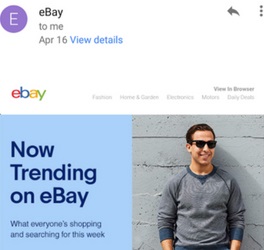
Product sales are the end goal for any retailer or ecommerce company. The idea is to get a subscriber to buy something from your website via the email you send them.
It sounds simple, but ecommerce email marketing is a surprisingly complex marketing strategy.
You need all the basics of a good email, like:
- A strong subject line
- Compelling body text
- Appropriate images and videos
But you also need customized graphics, visuals of a product in use, and a whole lot more to convince someone to buy.
Why? Because even if someone’s bought from you before, every buying choice is a new journey for your customer.
That means you’re starting from square one with most of your product sales emails.
So for every product sales email you send, it might not be enough just to show off a few photos and talk about why the product is great.
Instead, you may need to walk your customers through all four phases of the purchasing process — awareness, consideration, decision, and delight.
You start with awareness, which is introducing someone to your product.
You then move to consideration, and tell readers why they need a product you sell.
Then you hit decision, which is when a customer actually buys from you.
Then comes delight. That’s when someone is happy with their purchase and their interactions with your business.
This means product sales are little bit more complicated than they may sound for email marketing.
Lead conversion
Converting a lead into a paying customer is more complex than selling a product.
The customer journey is often longer, and you’ll probably follow up with the same person multiple times until they finally become a paying customer.
These touchstones are part of the awareness-consideration-decision-delight process, but they look much different than product sales.
In a nutshell, you’re convincing someone to sign some kind of contract, which has different implications from buying a product.
Your business is selling a commitment, one that — from the perspective of a customer — could be a risk, given the other options available.
So it’s not a situation where someone typically says, “I can’t decide which product to get, so I’ll buy both.”
Instead, you may be speaking to someone who’s thinking “I hope I’m making the right decision.”
That means you can’t just send one email to sell your services — you’ll need to send a series of emails based on the sales process with an option for your lead to convert at the end.
With those key differences, a drip campaign for lead conversion is much different from a product email blast.
How does email marketing work?
Email marketing works by obtaining the email addresses of your website visitors, leads, and current customers. Then, you’ll craft an email that promotes your brand, products, or services and send it out to your audience.
Your subscribers can:
- Read about your newest products or services
- Receive personalized recommendations
- Learn about your company’s most recent updates
They can click on links in your email to direct them to your website where they read your content, make a purchase, or learn more about your offerings.
You can also coordinate your email marketing strategy with other marketing efforts. For example, if you use content marketing, you can send subscribers must-read content from your website. Or, you could do a round-up of social media posts from happy clients.
But there’s a catch: You can’t just send emails to random people. You need their permission, and they need to give you their email addresses willingly. That takes planning, practice, and patience.
Don’t miss our Marketing Manager Insider emails!
Join 200,000 smart marketers and get the month’s hottest marketing news and insights delivered straight to your inbox!
Enter your email below:
Inline Subscription Form - CTA 72
"*" indicates required fields
(Don’t worry, we’ll never share your information!)
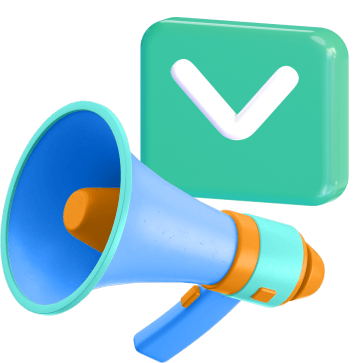
Start email marketing with WebFX
Are you ready to get started with email marketing? Consider teaming up with WebFX.
We have over 28 years of experience creating effective email marketing strategies for our clients. We’ve learned which strategies work best, what changes we can make, and how to adapt to different markets to make sure you get the results you need to grow your bottom line.
Your success is our #1 priority, so we take the time to understand your business, industry, and goals. With some of the best marketers and thought leaders in the industry, we’ve helped hundreds of clients succeed with email marketing in the past.
Contact us today or call us at 888-601-5359 to speak with a strategist about our email marketing services!
Related Resources
- What is Ecommerce Email Marketing and Why Do You Need It?
- What is Email Bounce Rate? (+5 Easy Ways to Lower It!)
- What is Email Deliverability? Definition & Best Practices for 2024
- What is Email Marketing Automation?
- What is Enterprise Email Marketing?
- What is SMB Email Marketing?
- ZURB Ink: Responsive HTML Email Framework
- 2024 Email Marketing Trends: 5+ Trends Impacting the Future of Email
- 10 Definitive Tips for Writing Captivating Emails
- 11 Best Email Marketing Examples for Inspiration in 2024
Marketing Tips for Niche Industries
- Tourism/hospitality Statistics
- Treat More Patients with Healthcare Marketing Services
- Urgent Care Marketing Ideas: 5 High-ROI Tactics
- WebFX: Your Education Digital Marketing Agency
- Why Auto Part Retailers Need Digital Marketing
- Why Digital Marketing is Essential for Auctioneers
- Your Guide to Digital Marketing for Exercise Equipment Companies
- Vision Care Industry Statistics
- 10 Best Orthodontist Marketing Ideas to Earn More Patients
- 10 Digital Marketing Strategies for the Heavy Equipment Industry






